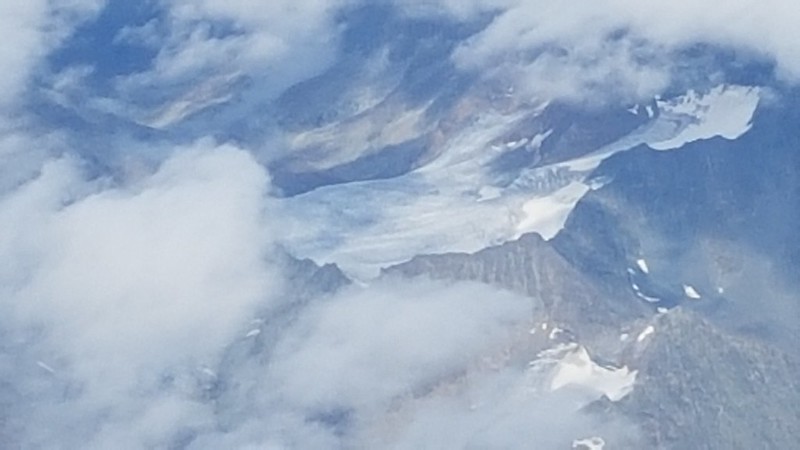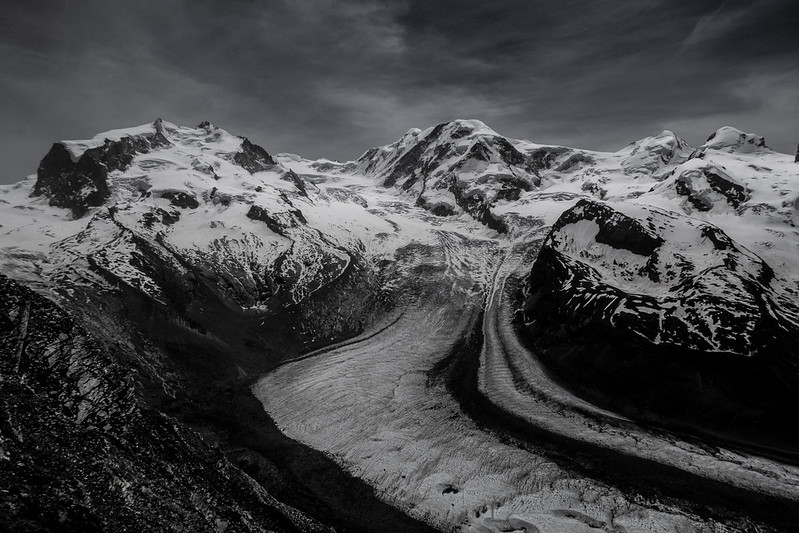In July 2022, the mountain guides in Chamonix are unwilling to do one of the main routes up to the top of Mont Blanc, the highest mountain in Western Europe. You can see this in mountaineering discussions on Reddit, and also, there are newspaper reports.
In Switzerland, the met service saw a new record for 0 degree altitude. This is a thing, and it is a thing I did not know about it until during the past week. They send up weather balloons, and they measure the altitude at which they hit 0 degrees. It’s logical, I guess, to do this. Anyway, the previous record was set in 1995, and they exceeded it by about 70 metres this year. 0 degrees is well above the top of the Matterhorn and Mont Blanc. You can tell too. I was in both Chamonix and Zermatt in the past 12 months; several times in the case of Zermatt. There is almost no snow on the Matterhorn, and what’s on the Breithorn, my favourite mountain because of how it resembles a wave, is fairly slushy looking. Zermatt is a year round skiing resort whose snow and ice seems to be melting. The risk of avalanches in the French Alps is considerably higher than usual, and the mountain guides in Chamonix are worried about rockfalls.
For a long time, the nearest I came to glaciers was a) gazing adoringly at them via Google satellite imagery and b) flying over them on the way to Italy.
I grew up in Ireland. We don’t have glaciers there. There’s one glacial fjord there (and I probably wouldn’t swim in the water either cos it would be uh glacial) . So I see glaciers as magical, and amazing and there are seriously people who dreamed of seeing glaciers but probably never well.
So to go to Zermatt to see the glaciers was super exciting for me. And then also to see the Mer de Glace in Chamonix.
The Mer de Glace has a special place in my memory, not least because I hurt my ankle the morning I went up on the train, and then down on the gondola, and then down the 600 odd steps to get under the glacier. It’s really nice in there, by the way, ice sculptures, stunning blue colours, and slanted strata interspersed with sand and mud here and there. It doesn’t snow much where I live now or where I grew up so this stuff is really very amazing to me. Walking back up the 600 steps on the other hand, that was challenging. We will discuss that memory some other time.
But, when the train went there first, the glacier was at the level of the train station. It isn’t any more. When you start taking the steps down to the glacier mouth, every so often, there is a plaque in the rock face telling you when the ice reached this level. They are closer and closer, the lower down into the valley you get. As an indication of the price of global warming, it’s very, very sobering.
I very regularly take a look at the web cam at the Gornergrat not far from Zermatt. (those webcams are dead handy for travel dreaming most days). What has struck me is how much less ice there is this year, compared to when I photographed it in June 2021. It’s just..amazing.
And utterly devastating.



